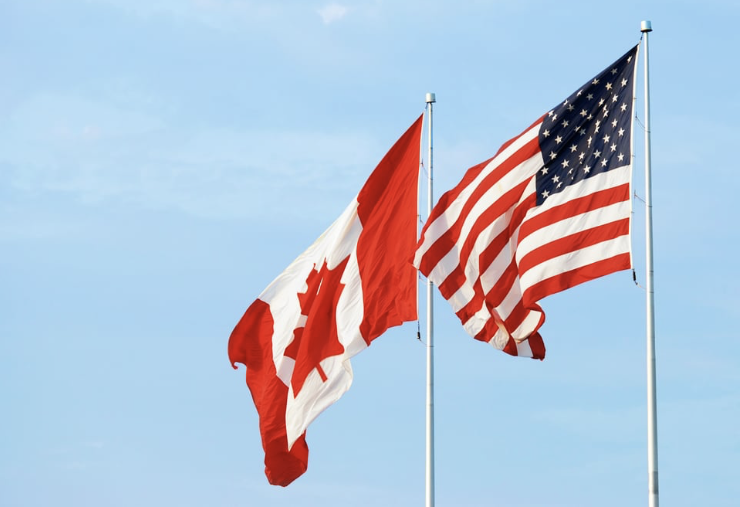Canada Secures 30-Day Delay on U.S. Tariffs Following Border Security Agreement

In a significant development, Canada has successfully negotiated a 30-day delay in the implementation of U.S. tariffs on its exports, just hours before the tariffs were set to take effect. This pause follows a productive conversation between Canadian Prime Minister Justin Trudeau and U.S. President Donald Trump, which resulted in a new border security agreement designed to address key concerns from both countries.
Under the terms of the agreement, Canada has pledged to advance its $1.3-billion border enhancement plan, which includes the deployment of thousands of personnel to strengthen security along the U.S.-Canada border. This effort is aimed at addressing issues related to drug trafficking and other security concerns.
Earlier, Prime Minister Trudeau had signalled the possibility of retaliatory 25% counter-tariffs on U.S. goods, but this agreement has provided a temporary resolution, with both sides agreeing to a 30-day cooling-off period to allow for continued dialogue. President Trump expressed optimism about the development, stating on social media, “I am very pleased with this initial outcome, and the tariffs announced on Saturday will be paused for 30 days to determine whether a final economic deal with Canada can be structured. FAIRNESS FOR ALL!“
Prime Minister Trudeau emphasised that this pause provides an opportunity for both governments to work together more effectively. He also outlined a series of proactive measures, including appointing a fentanyl czar, labelling Mexican cartels as terrorist groups, and establishing a “Canada-U.S. Joint Strike Force” to combat organized crime and illicit drug trafficking.
This agreement mirrors a similar arrangement made with Mexico, which also secured a temporary tariff delay while both countries work toward solutions to issues such as drug smuggling and illegal immigration. Meanwhile, President Trump’s planned 10% tariff on Chinese imports remains on track, although he has indicated that he will continue discussions with Chinese President Xi Jinping in the coming days.
While the immediate threat of a trade conflict between the U.S. and its two largest trading partners appears to have been alleviated for the time being, the situation remains fluid. Both Canada and Mexico now have additional time to continue negotiations, although President Trump has indicated that he may revisit tariff impositions, with new tariffs on European Union imports already being considered.
President Trump’s introduction of the tariffs can be viewed as a patriotic effort with the potential to strengthen domestic trade while addressing concerns related to unfair practices that may harm the country’s reputation. While the tariffs may seem stringent, they demonstrate the lengths to which a leader is willing to go in order to protect national interests and prevent exploitation of market access. Although these tariffs may result in higher costs for American consumers who are looking to buy imported goods, they could also encourage greater support for local manufacturers. Additionally, the tariffs might serve as a catalyst for encouraging foreign trading partners to consider manufacturing goods in the United States, thereby fostering economic growth and creating new employment opportunities for American workers. While the final decision on the tariffs remains uncertain following the 30-day cooling period, the potential benefits are significant.
